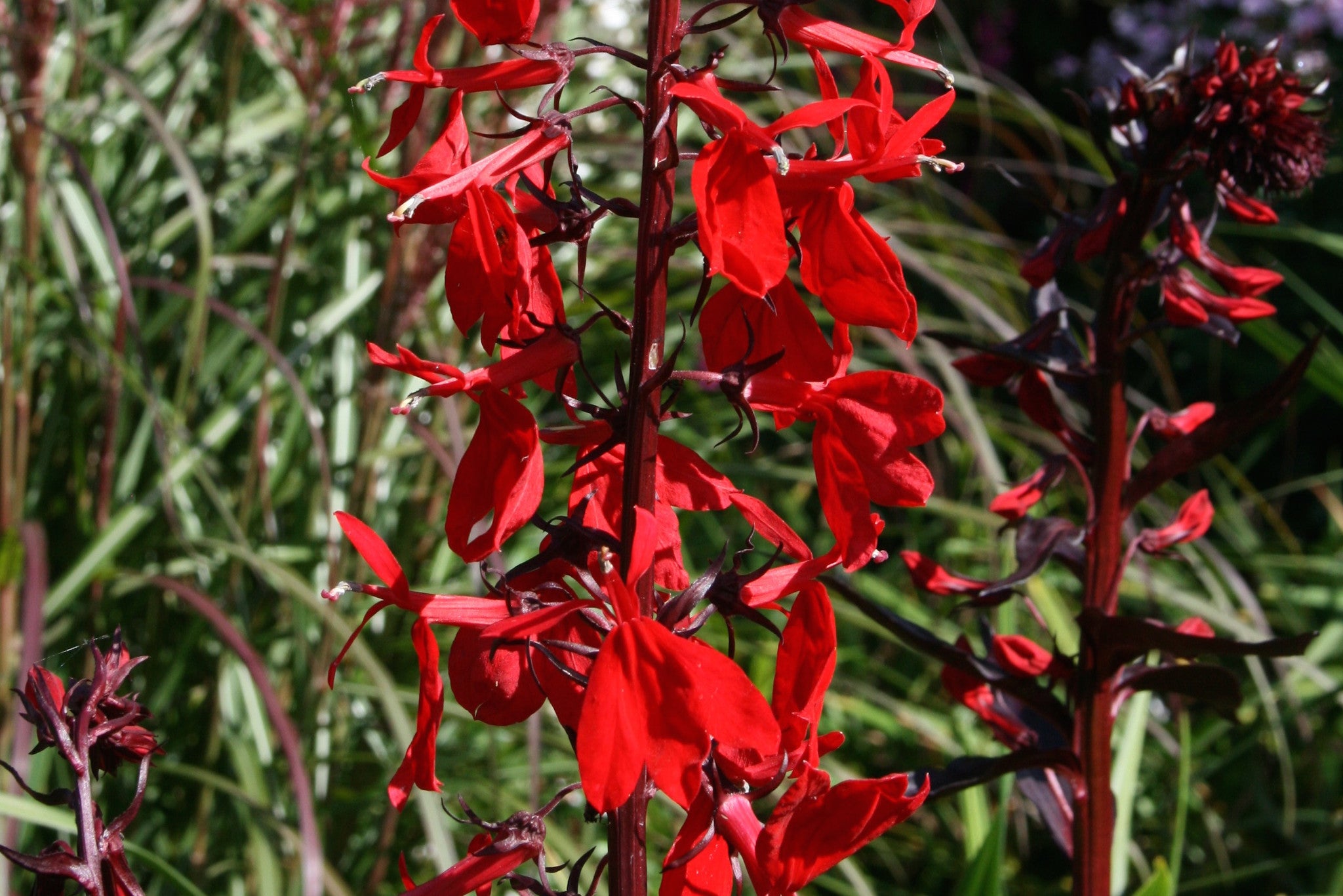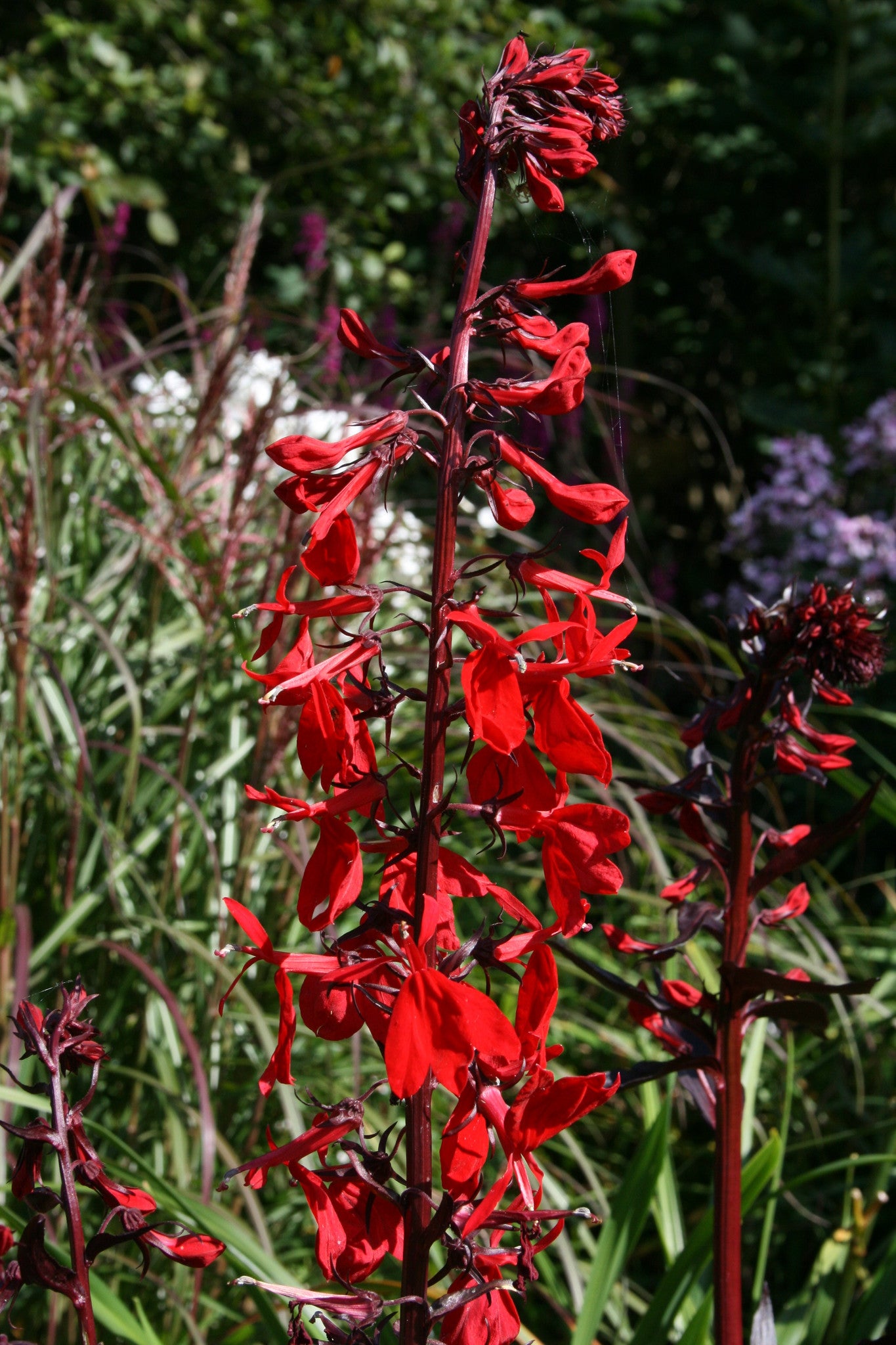Lobelia cardinalis 'Queen Victoria'
Approx. 0.5 litre pot
About this cultivar:
Lobelia cardinalis 'Queen Victoria' provides stunning spikes of scarlet flowers among beautiful, beetroot-coloured foliage. Use it to fill gaps left by early flowering plants or add to a hot border. Does well near ponds or streams. Received a Royal Horticultural Society Award of Garden Merit in 1993.
The species cardinalis was introduced to Europe in the mid-1620s, where the common name cardinal flower was in use by 1629, likely due to the similarity of the flower's colour to the vesture of Roman Catholic Cardinals. Hence the latin epithet.
- Position: Full sun, partial shade
- Soil: Almost any soil, grows well in Ballyrobert
- Flowers: August, September, October
- Other features: Royal Horticultural Society Award of Garden Merit (RHS AGM)
- Hardiness: Fully hardy, grows well in Ballyrobert
- Habit: Clump forming
- Foliage: Deciduous
- Height: 60 - 90 cm (2 - 3 ft)
- Spread: 45 - 75 cm (1.5 - 2.5 ft)
- Time to full growth: 2 to 5 years
- Plant type: Herbaceous Perennial
- Colour: Green, purple, red
- Goes well with: -
About this genus:
Lobelia (lo-be-le-a) is a genus named after the Belgian botanist Matthias de Lobel (1538–1616). It is in the bell-flower family (Campanulaceae) comprising almost 400 species that are distributed worldwide.
Lobelia prefers damp soils and in the wild is often seen growing in boggy places like swamps in sun or part shade. The flowering stalks of Lobelia arise from flat green winter rosettes and provide rich jewel tones of red, pink, blue and more. Lobelia flowers generally begin forming in midsummer on tall stalks and may last into autumn. It is a tough, low maintenance plant which makes it perfect for wet gardens.
According to the Victorian practice of floriography or language of flowers, sending a floral arrangement of Lobelia was a sign of malevolence or ill will. Perhaps that was tied to one of the traditional herbal uses of Lobelia which was to induce vomiting.




